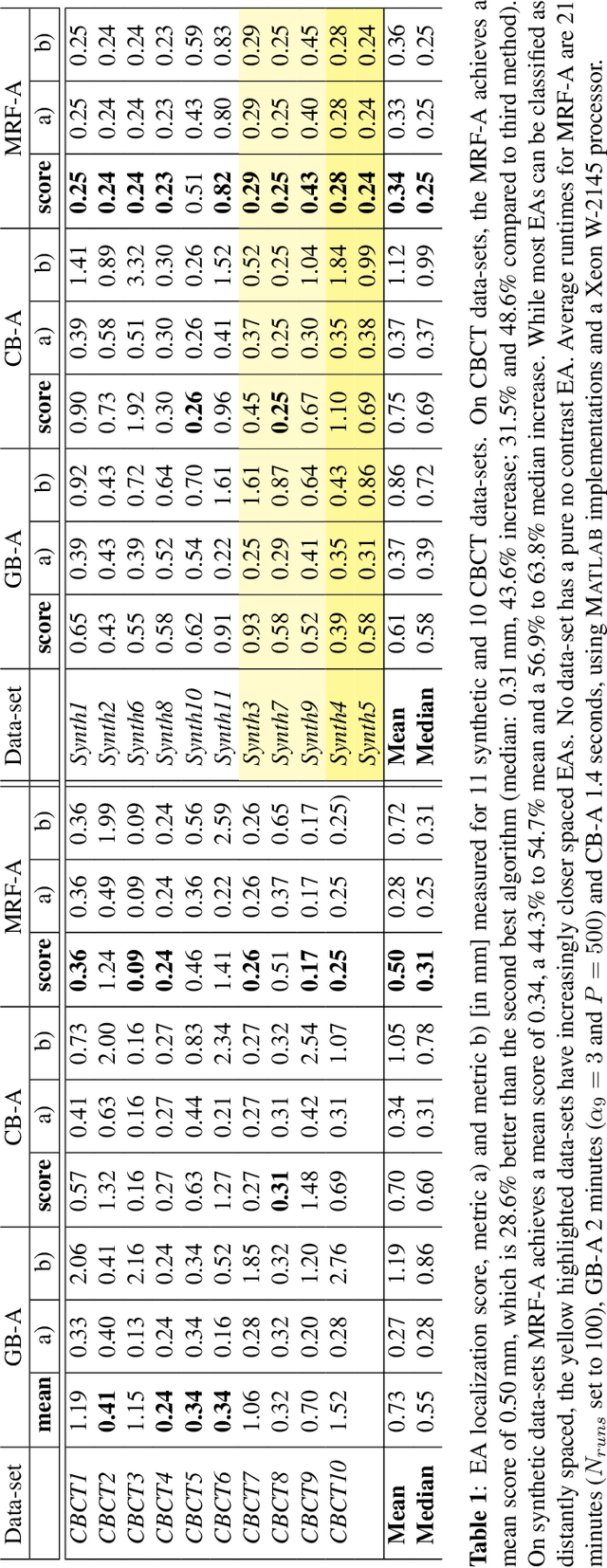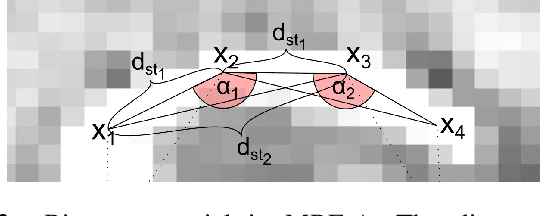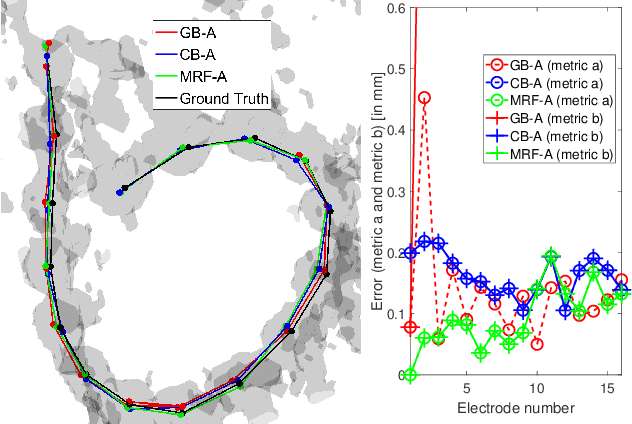Benjamin Krüger
Localization of Cochlear Implant Electrodes from Cone Beam Computed Tomography using Particle Belief Propagation
Mar 18, 2021



Abstract:Cochlear implants (CIs) are implantable medical devices that can restore the hearing sense of people suffering from profound hearing loss. The CI uses a set of electrode contacts placed inside the cochlea to stimulate the auditory nerve with current pulses. The exact location of these electrodes may be an important parameter to improve and predict the performance with these devices. Currently the methods used in clinics to characterize the geometry of the cochlea as well as to estimate the electrode positions are manual, error-prone and time consuming. We propose a Markov random field (MRF) model for CI electrode localization for cone beam computed tomography (CBCT) data-sets. Intensity and shape of electrodes are included as prior knowledge as well as distance and angles between contacts. MRF inference is based on slice sampling particle belief propagation and guided by several heuristics. A stochastic search finds the best maximum a posteriori estimation among sampled MRF realizations. We evaluate our algorithm on synthetic and real CBCT data-sets and compare its performance with two state of the art algorithms. An increase of localization precision up to 31.5% (mean), or 48.6% (median) respectively, on real CBCT data-sets is shown.
 Add to Chrome
Add to Chrome Add to Firefox
Add to Firefox Add to Edge
Add to Edge